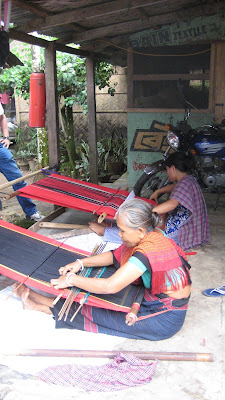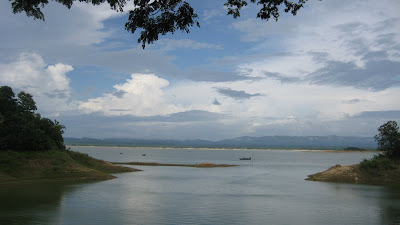I went traipsing through rice paddies this weekend!


And of course rice makes me think of...
Check out
The Economist's online debate on rising food prices, it’s really interesting. And since I’m too timid (slash unqualified, I feel) to post comments on their website, you all can read my thoughts here. :P
Really, rising food prices
could be good. It
may increase investment in agricultural technology, spurring innovations that will enable us to feed the rapidly growing world population. It
may pressure governments to revamp corrupt and counter-productive agricultural and trade policies. But how viable is either of these scenarios? While I’m optimistic that money invested will bring about innovative ways to increase food production, increasing the supply and bringing prices down, it’s going to take a
long time. And as for policy, look at the failed G8 negotiations a few weeks ago, or the success of yet another corrupt Farm Bill in the U.S. Both show how gloomy the prospects are for change.
Yes, the price increases are caused by dietary improvements, but not to those most lacking. The poor are hit twice as hard: not only are they left further behind by a rising middle class, but it is now even more difficult to maintain their already-low standard of living. That’s what food aid NGOs were created for, right? But with the prices of food increased, this means the same amount of aid buys less food and reaches fewer people.
The spike in food prices has disastrous effects on the most vulnerable-- women and children of developing nations. Malnutrition during pregnancy and childhood has terrible long-term effects. Malnourished mothers-to-be have a high mortality rate. And in places with high fertility rates, most mothers are mothers-to-be, and are the primary caretakers for many children. Additionally, malnourished mothers typically have malnourished, underweight babies. Physically, one never fully recovers from starving as a child. Malnourished children suffer a slowed rate of mental development, often never catching up to their peers. It’s hard to learn when you’re hungry, and these children will miss a lot of school because they are sick. So we are, essentially, setting these children up for failure, and for an even lower standard of living than their parents, even if food prices someday come back down.
There is definitely a possible upside, long-term, for humanity in this food crisis. But the short-term effects are certain, and significant. If immediate action isn’t taken to lessen the blow, there will also be long-term negative effects from this price spike. There’s no telling how extensive those will be, but, at the rate things are moving now, I think they will negate any positive developments.
We are digging a ditch of "human resource" debt for future generations. Eerily, in this way it's like the credit crisis, and global climate change. The longer we wait for policy change, the more future generations will suffer.

































